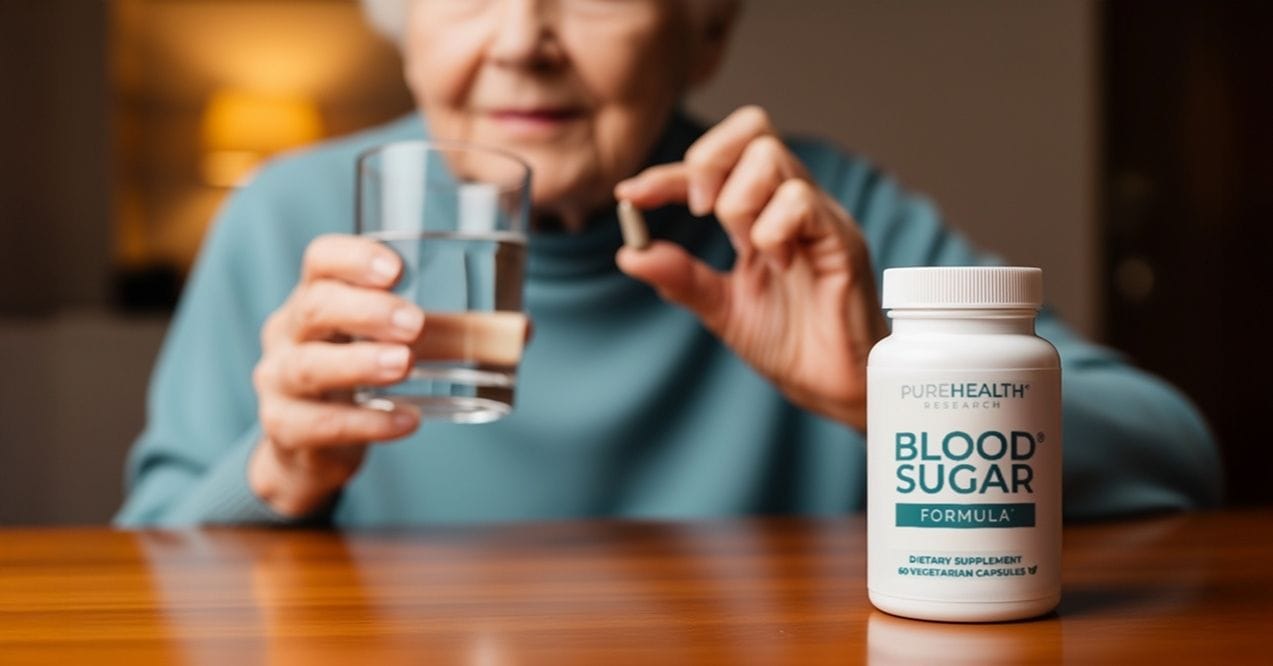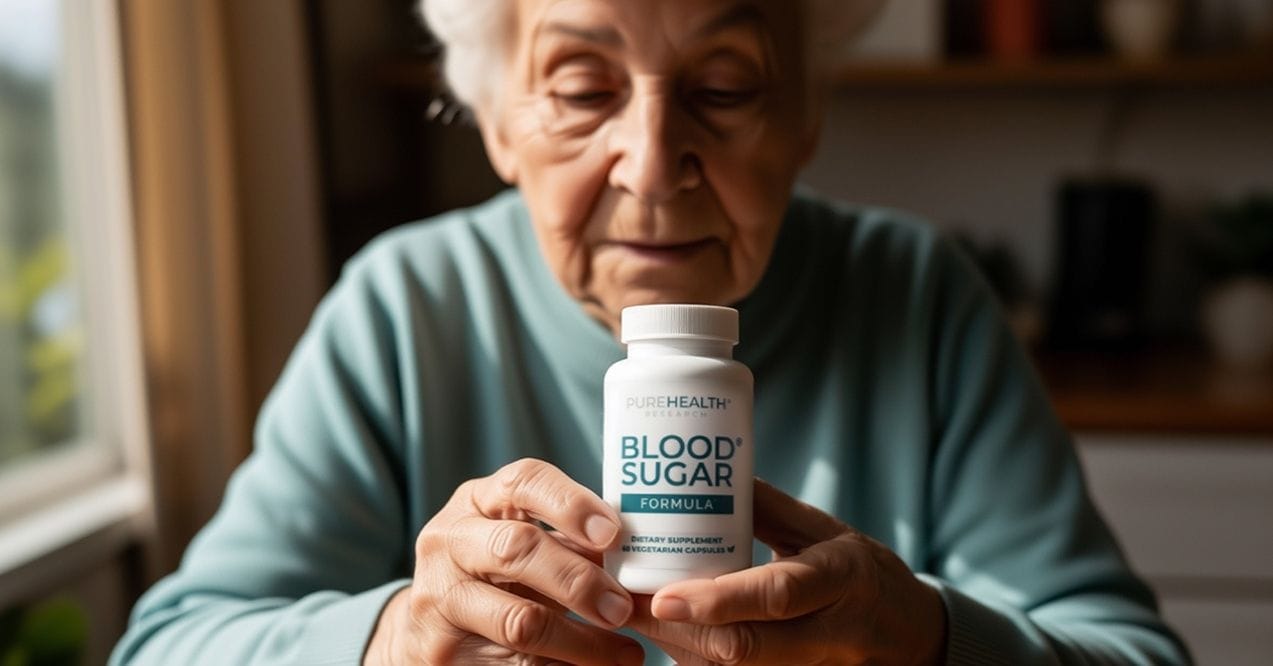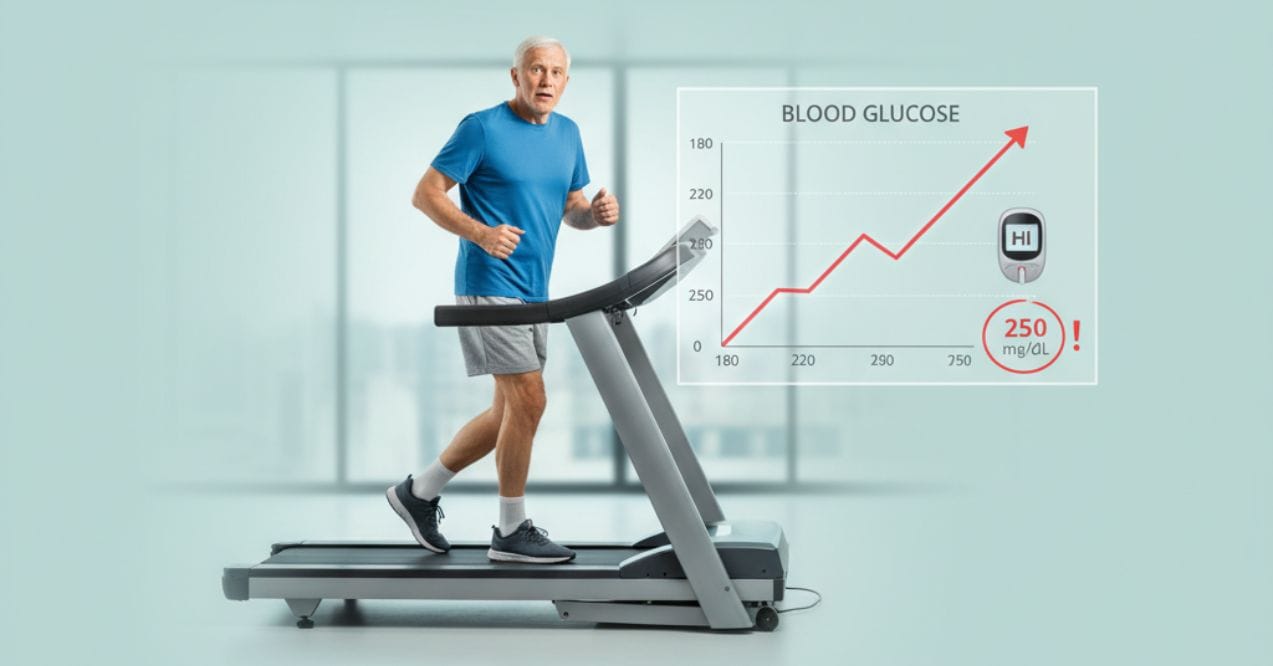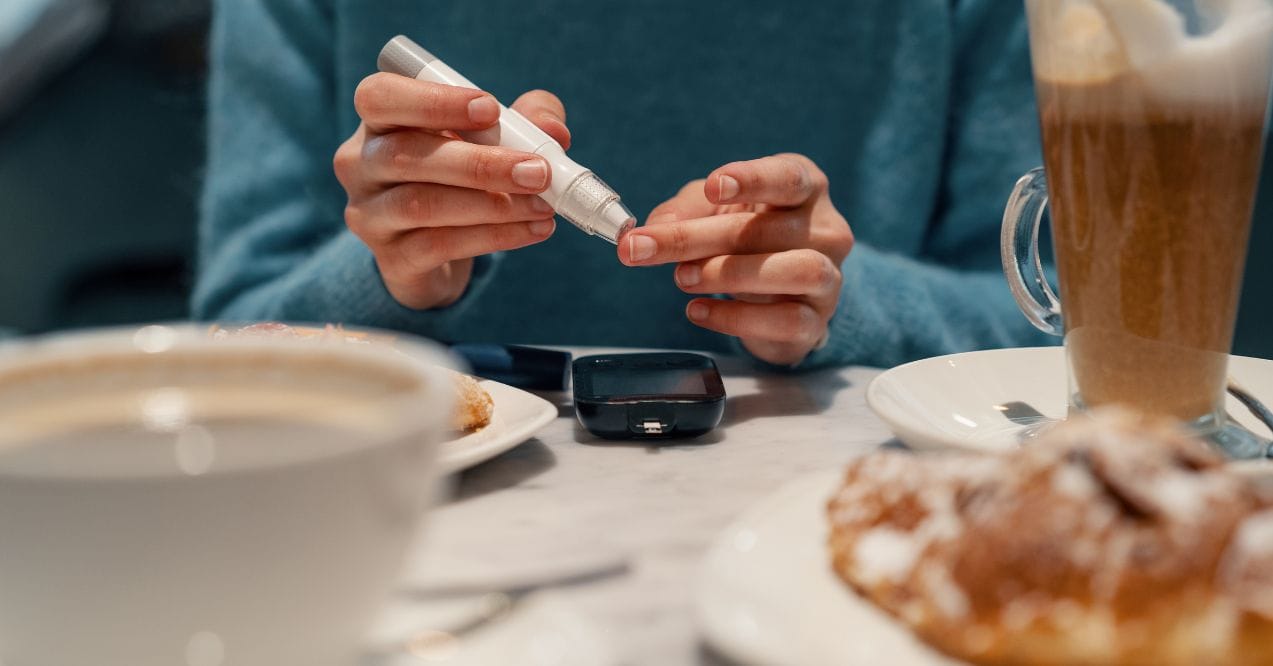What Exercises Lower Blood Sugar the Fastest?
Have you been wondering what exercise lowers blood sugar the fastest? Read along as we unravel that mystery and get the hang of diabetes management.


Do you know what exercise lowers blood sugar the fastest? Hold that thought, and let’s try to unravel the mystery together. If you have been around long enough, you probably already know healthcare professionals recommend regular exercise for optimal health. Consistent physical activity checks your weight and cushions you from chronic illnesses such as cardiovascular disease and diabetes.
That said, the universal truth is that a host of factors affect the etiology of a disease. Genetics plays a crucial role in some illnesses, and it is, as such, not surprising to find an active individual living with the aforementioned chronic conditions. Of course, consistency in your regular physical routine matters a lot more if you have diabetes, as uncontrolled spikes in blood sugar levels can be potentially dramatic. It is, therefore, in your best interest to be in the know of how best to manage your hyperglycemia.
Interestingly, what physical activity means in this context isn’t what may have sprung to mind. If you thought about all that business that bodybuilders go about in the gym, you’re wrong. We’re talking about simple but effective exercises that will work for you. With this approach, consistency is key, as is the case with almost everything else in life.
How Does Exercise Affect My Blood Sugar?
Health experts agree exercise is a foolproof way to reduce elevated blood sugar levels. This is because physical activity increases your cells’ sensitivity to insulin, the hormone that promotes glucose absorption from the bloodstream and into body cells. But did you know that exercise has both short and long-term effects on how your body regulates sugar?
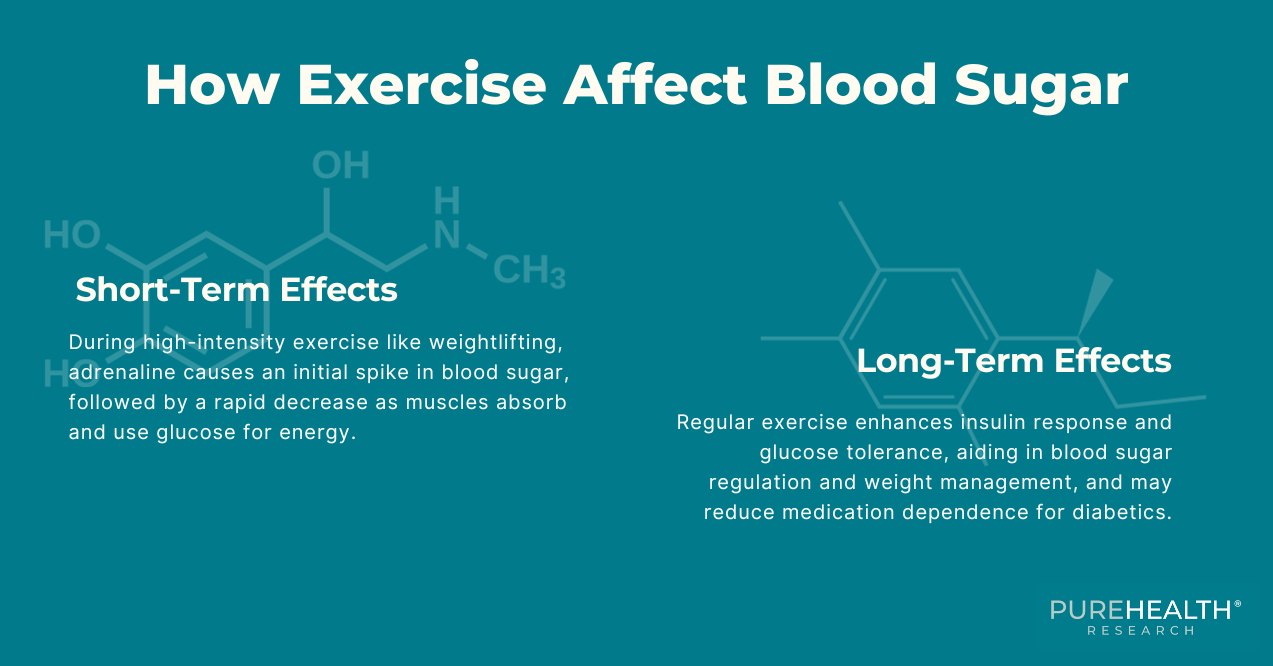
Short-Term Effects
As soon as you get in your groove, there’s an immediate but short-lived blood sugar spike because the adrenal gland releases adrenaline. Immediately after, though, glucose levels are reduced quickly in the blood as muscles quickly absorb and utilize this substance for energy. These actions happen sequentially and are especially common in high-intensity training and weightlifting.
Long-Term Effects
Earlier on, we agreed that the key to figuring out this exercise thing is consistency, no? With time, your body adjusts to your new lifestyle habits, and you’ll thank yourself for it. With regular exercise, you can expect the following:
- Enhanced Insulin Response: With consistent exercise, your cells often become more receptive to insulin. This improved sensitivity promotes better regulation of blood sugar levels. This positive effect can be reflected in the long term, as evidenced by an HBA1c test.
- Improved Glucose Tolerance: If you’ve experienced sudden spikes in blood sugar after consuming a carbohydrate-rich meal, regular physical activity can help mitigate such responses, thereby improving your body’s ability to handle glucose.
- Weight Management: This might seem like stating the obvious, but regular exercise assists in weight management and can contribute to weight loss. As you might be aware, excess body fat is associated with insulin resistance, which is particularly concerning for individuals with diabetes. Conversely, maintaining a healthy body composition can be protective.
- Reduced Dependence on Medication: For many, especially those with type 2 diabetes, consistent exercise coupled with a balanced diet can reduce the reliance on certain medications. This is due to the combined benefits of improved insulin sensitivity, better glucose tolerance, and healthier body composition.
What Exercise Lowers Blood Sugar the Fastest?
As you may have already deduced, several exercises known for their efficient action in lowering blood sugar levels exist. Let’s have a look at them, shall we?
1. Aerobic Exercises

The distinguishing characteristics of aerobic activities, otherwise known as aerobic exercises, are an elevated heart rate and rapid breathing due to continuous physical activities following a specific rhythm. Common aerobic exercises include:
- Walking
- Jogging
- Cycling
- Swimming
- Dancing
- Stair climbing
- Jumping rope
- Team sports such as basketball or soccer
Aerobic exercises are highly effective in lowering blood glucose levels in both the short and long term. In addition, these activities stimulate glucose storage in the liver as glycogen (keeping dangerous levels away from the bloodstream), and existing literature suggests that they actively reduce stress.
The trick to aerobic exercise is choosing an activity or a combination of activities you enjoy. This way, you’ll remain motivated all through, and isn’t that how one achieves consistency?
At the same time, review your options with your healthcare provider before getting started. If you are already living with diabetes, there’s the glaring risk of going hypoglycemic (where blood sugar levels are dangerously low) should you overexert yourself, which will defeat the entire purpose of physical activity.
2. Tai Chi

Admittedly, tai chi may not be the first thing that springs to mind when someone asks you what exercise lowers blood sugar the fastest. But as you’ll see, this Chinese form of martial art is a “hidden gem” within the context of this article, owing to its numerous physical and mental health benefits. When it comes to lowering blood sugar, tai chi shows its hand thus:
- Increased Muscle Activity: In truth, tai chi is slow-paced, and some may also describe it as low impact since it is less stressful on the muscles, bones, and joints. But did you know this martial art promotes muscle activity to the tune of being as impactful as strenuous aerobic exercise? Increased muscle activity promotes active glucose uptake from the bloodstream into body cells, thus lowering blood sugar levels.
- Stress Reduction: Improved mental health happens to be one of the main benefits of tai chi, which has a trickle-down effect on blood sugar regulation. An individual suffering from chronic stress has an elevated amount of cortisol in their body, leading to insulin resistance over time. The vice versa is true for a stress-free individual. Stress can also alter a person’s feeding habits, resulting in a complete loss of appetite or craving for comfort foods, which are usually unhealthy and high in calories.
- Weight Management: Per this article, regular tai chi promotes weight loss, even without additional lifestyle changes. Imagine combining this martial art with a proper diet and aerobic exercise. The results would be phenomenal! As was mentioned earlier, maintaining healthy body fat is crucial if you are to beat insulin resistance.
3. Anaerobic Exercises (Strength Training)
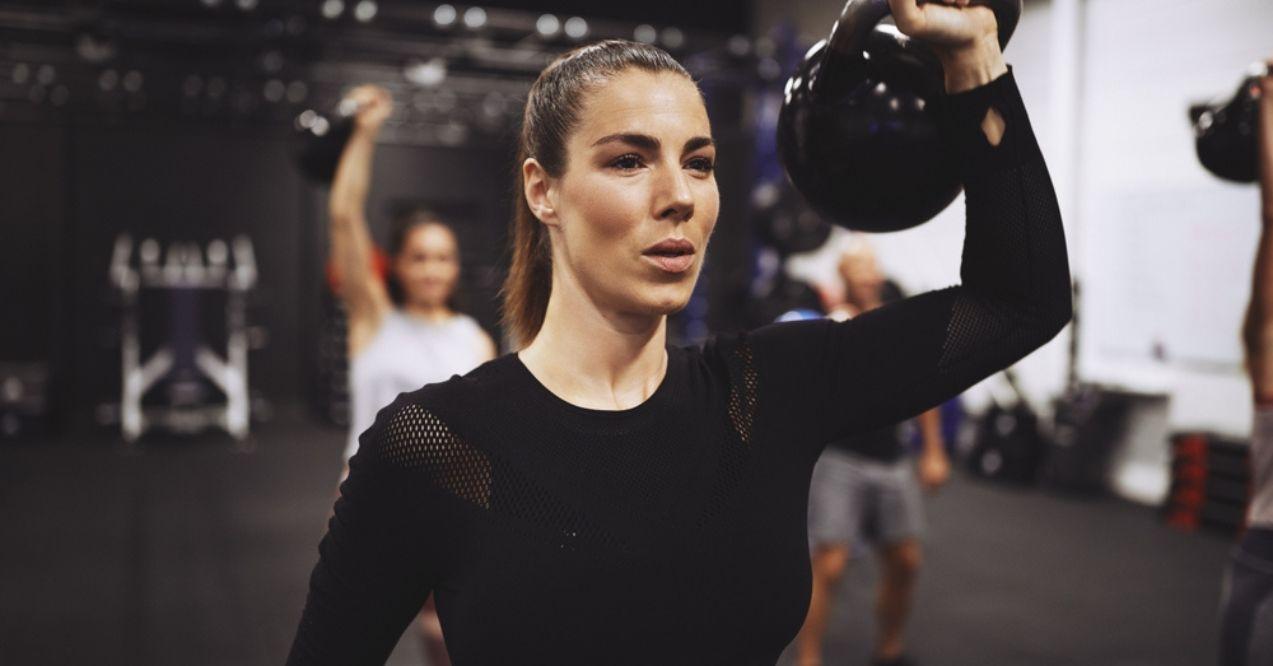
Unlike aerobic activities, anaerobic exercises, otherwise known as strength training, are not rhythmic and continuous. Instead, they are high-intensity and require short energy bursts that call for maximum effort. Examples of strength training activities include:
- Weightlifting
- Resistance bands
- Sprinting
- High-intensity push-ups, pull-ups, and squats
With anaerobic exercises, of note is that there may be a temporary spike in blood sugar levels in the short term. It will not get to alarming levels, but it is always best to check your glucose level before, during, and after your routine, just to be safe. Over time, the muscle gain and endurance that result from these exercises contribute to long-term blood sugar control. Exactly how does this happen, you ask? Here’s how.
- Optimized Blood Sugar Response: Strength training exercises have the body burning calories long after you finish your routine, sometimes going as far as more than 12 hours later. Known as the afterburn effect or the excess post-exercise oxygen consumption (EPOC), this phenomenon utilizes glucose. When you exercise regularly, EPOC becomes familiar to your body, promoting long-term blood glucose control.
- Muscle Gain: Anaerobic exercises actively promote muscle building, and they happen to be one of the primary sites of glucose storage in the body. More muscle means the body has more space for storing glycogen (the inactive form of glucose), keeping excess active glucose away from the bloodstream. In the same vein, strength training results in muscle fatigue. In the immediate aftermath of a workout, the body utilizes glucose to repair fatigued muscles, lowering levels circulating in the blood.
- Elevated Basal Metabolic Rate (BMR): With strength training comes an enhanced basal metabolic rate, BMR being the energy one’s body requires to perform physiological functions while at rest. An elevated BMR means that the body burns more calories even when you’re not engaged in any physical activity, a characteristic that favors weight management.
4. High-Intensity Interval Training (HIIT)
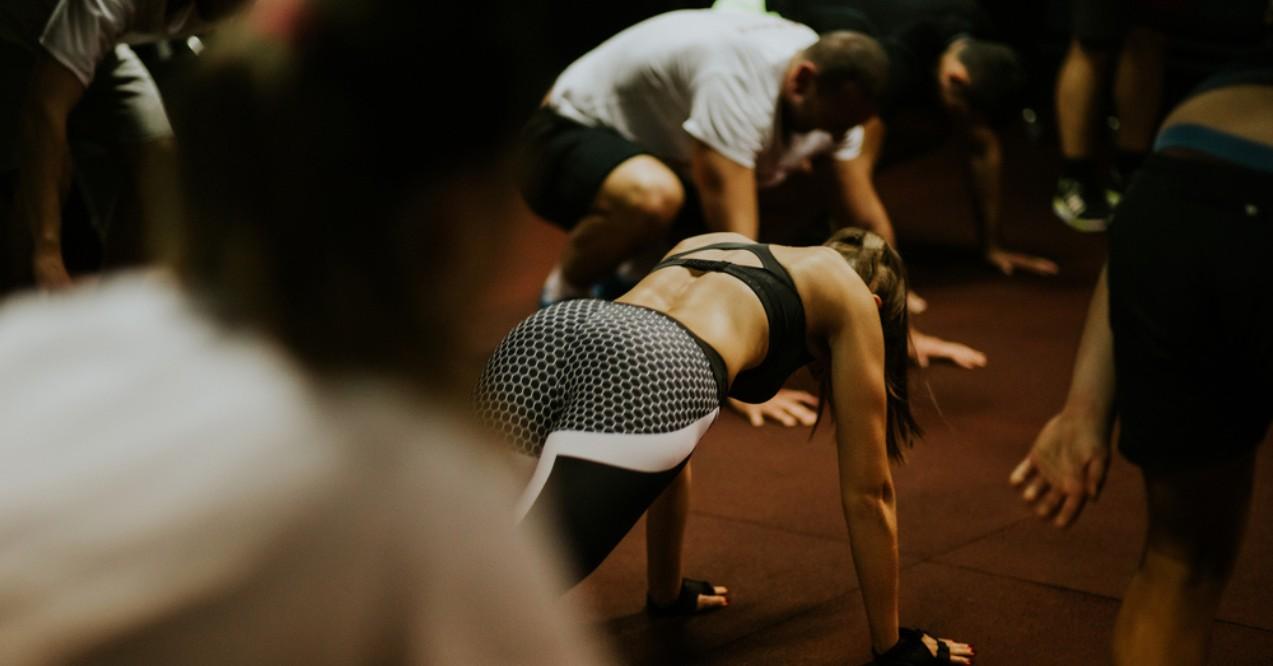
High-intensity interval training (HIIT) falls into the category of anaerobic exercises for many an expert, but it is the feeling here that it deserves its own entry. HIIT typically works with short and intense bursts of a high-intensity activity using maximum effort, followed by a brief recovery period and then a repetition.
HIIT includes multiple strength training activities such as push-ups, pull-ups, squat jumps, and mountain climbers. Again, the trick is to go with activities you enjoy doing and those that fit your goals. As is the case with anaerobic exercises, HIIT could potentially increase your blood sugar level in the short term, especially when you are actively at it. In the long term, however, the training programs your body to control blood sugar more efficiently, as discussed above. Additionally, HIIT preserves muscle and is very effective for fat loss.
Staying Safe When Exercising
With all these physical activities under discussion, the rule of thumb is to involve your healthcare provider before starting, especially if you live with a chronic condition. It also wouldn’t hurt to throw in a fitness professional in there. The goal is optimal health; your mantra should always be “Better safe than sorry.”
But even with their advice, the most likely outcome is that you will be going about your business in the absence of both professionals, right? As you continue to determine what exercise lowers blood sugar the fastest, it is only prudent that you are knowledgeable on how to stay safe when catering to your physical routine.
Remember how we said you need to monitor your sugar levels before, during, and after exercising because of the risk of going hypoglycemic? That’s where the 15-15 rule comes in. As you know, a blood sugar reading below 70 mg/dL is low.
You should employ the 15-15 rule should your glucometer give a reading anywhere between 55-69 mg/dL. Consume 15 grams of carbs and wait 15 minutes before taking another blood sugar reading. If it is still below the 70 mg/dL target, repeat until you hit the mark. Once you get there, have a nutritious meal to ensure the levels do not drop to hypoglycemia again.
Incorporating supplements for blood sugar control into your routine can be a helpful way to support balanced glucose levels, especially when combined with healthy lifestyle habits. These supplements often contain natural ingredients like berberine, alpha-lipoic acid, and chromium, which help regulate glucose metabolism and improve insulin sensitivity. However, it’s important to consult your healthcare provider before adding supplements, particularly if you’re living with diabetes or other chronic conditions.
From your discussion with both the doctor and the fitness professional, you will have understood your capabilities and current health status. They will guide you on how much you can exert yourself without doing more harm than good. Finally, the 15-15 rule works for both type 1 and type 2 diabetes. Individuals living with type 1 diabetes are, nonetheless, at a higher risk of going hypoglycemic, especially those relying on insulin therapy.
How to Stay Motivated?
Maintaining an active lifestyle is a daunting task, whether living with diabetes or not. And while occasional setbacks can occur, they should not derail you from the bigger picture. The secret is to find tactics and routines that work best for you, and the following could help you in your journey to consistency:
- Creating a Routine: To create a routine, schedule your workouts at the same time daily. If you only exercise on certain days of the week, schedule it such that you’ll be working out at the exact time on those specific days. A regular schedule instills the habit in you, making it much harder to skip workout sessions.
- Exercise With a Friend or a Group: Exercising in isolation is lonely and tiresome. Activities are much more fun with a partner or multiple partners, as in a group. The other parties hold you accountable, build a sense of community, and provide the necessary support you need to push through.
- Tracking Your Progress: Using fitness trackers to monitor your progress or journaling it all down will provide real-time insights into your achievements. What could be more motivating?
Key Thoughts
As has come out clearly throughout this text, exercise plays an undeniable role in managing blood glucose levels. Consistency is key if one wishes to reap both the short and long-term benefits of physical activity in diabetes management. To sum it up:
- Aerobic exercises are highly effective when it comes to lowering blood glucose levels, both in the short and long term.
- Tai chi is beneficial for its ability to reduce stress, increase muscle activity, and manage weight.
- Strength training (both HIIT and anaerobic activities) offers particular benefits by enhancing glucose response and elevating BMR and muscle gain.
- Your safety comes first, and the 15-15 rule should always come into play where necessary.
- Creating a routine, exercising with others, and tracking your progress will keep you motivated.
With this comprehensive breakdown of how different types of physical activities aid in diabetes management, you now know what exercise lowers blood sugar the fastest, right?
Continuous and rhythmic exercises such as walking, jogging, swimming, dancing, and cycling are the most effective at lowering blood sugar levels. Practicing these will ensure the best results.
The rule of thumb is to engage your healthcare provider before getting into any workout routine. It would also be prudent to speak to a fitness professional.
Sign up for our Healthy Living newsletter!
Advertisement. This site offers health, wellness, fitness and nutritional information and is designed for educational purposes only. You should not rely on this information as a substitute for, nor does it replace, professional medical advice, diagnosis, or treatment. If you have any concerns or questions about your health, you should always consult with a physician or other health-care professional. Do not disregard, avoid or delay obtaining medical or health related advice from your health-care professional because of something you may have read on this site. The use of any information provided on this site is solely at your own risk.



